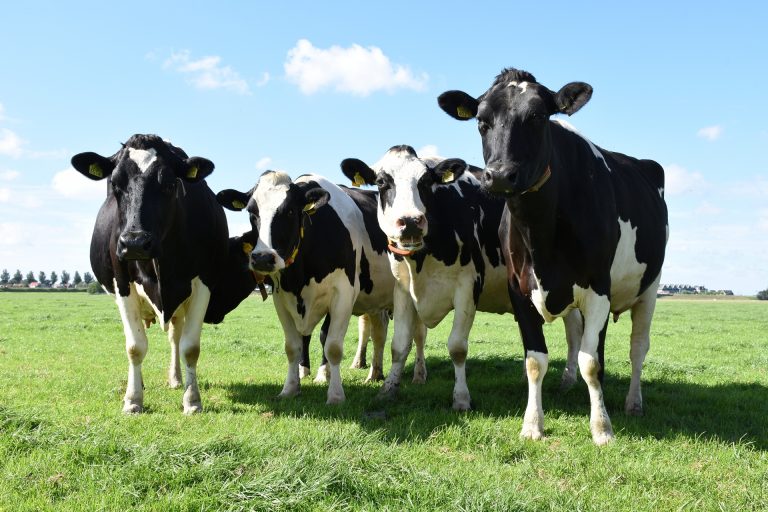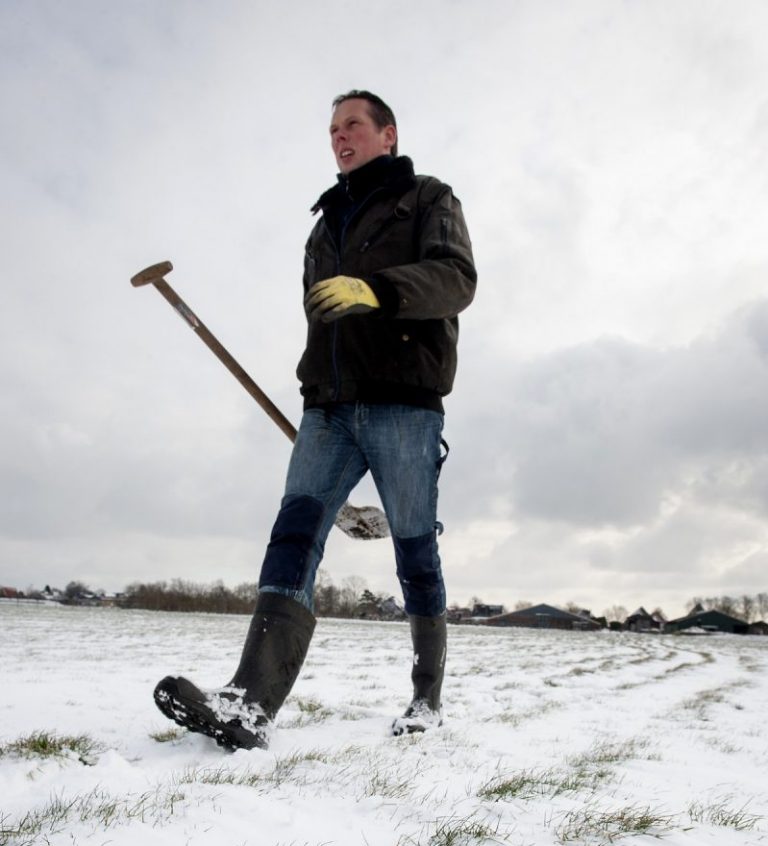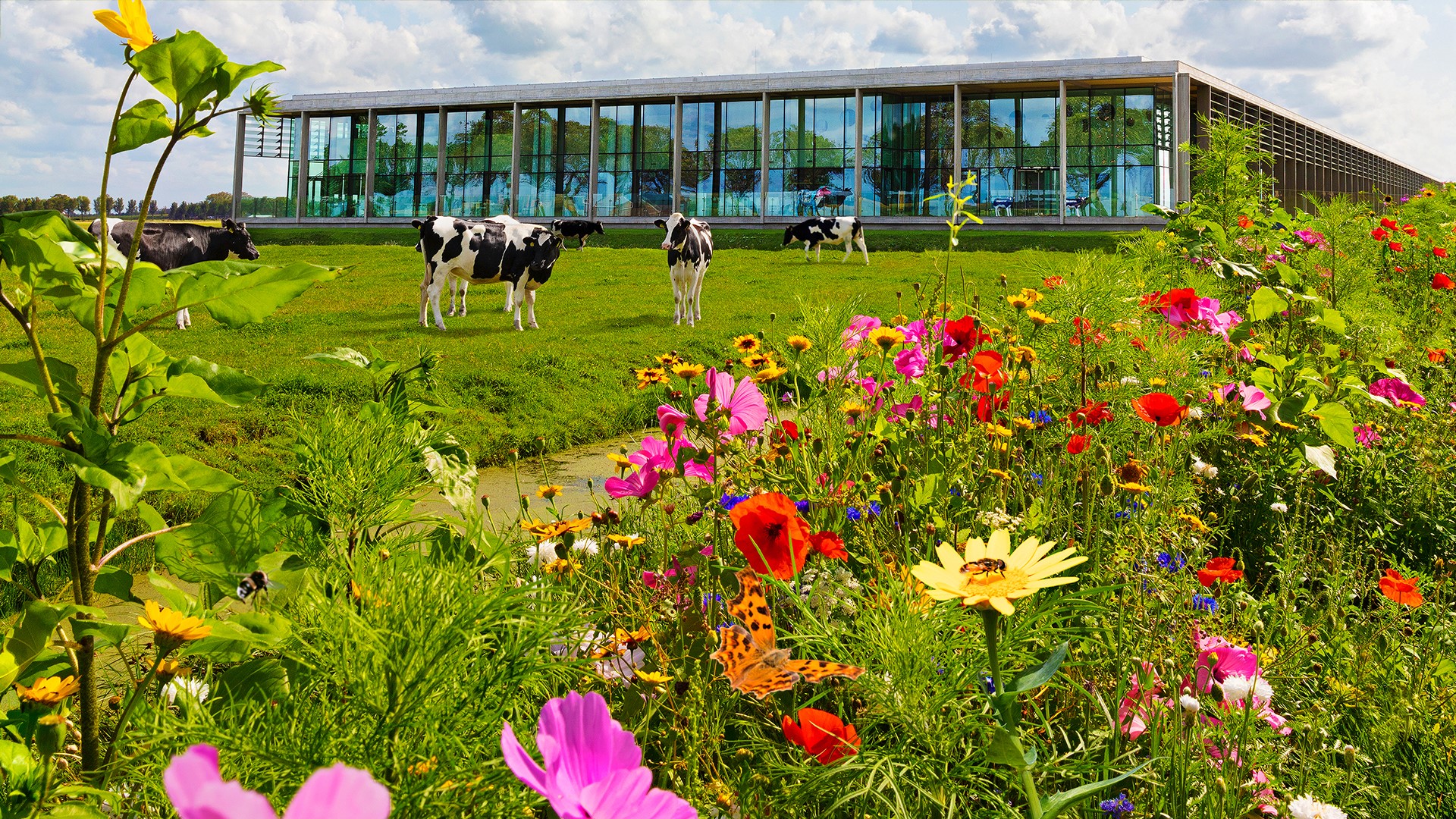For twenty years, CONO has regarded outdoor grazing as the basis for dairy farming. Cows are grazing animals, so pasturing is natural and good for the animal. The more fresh grass the cow eats, the less concentrated feed is needed from far away. In addition, fresh pasture grass also ensures softer fats and nutritious proteins in the milk, which is the basis for melt-in-the-mouth cheese.
Lots of grazing is also good for the soil. Cow manure is rich in fibres and minerals and ensures healthy soil life. Everything on a dairy farm is connected. The healthy grass is eaten by the cow and birds eat the animals that live in the grass.
Pasturing is part of the climate solution
Grassland is one of the most important carbon sinks and thus an important factor in the fight against climate change. At the same time, cows also emit methane as part of their digestive process. In the meadow, cows do not defecate where they urinate, which prevents the release of ammonia (a strong smelling gas). In addition, according to recent research, the combination of frequent grazing, the season and the quality of the grass has a positive effect on the emission of methane from the rumen.
Thus, grazing also contributes to our sustainability goals. And we have a big ambition: Together we are going for positive for future generations, doing everything we can to pass on our world to the next generation in a positive way. Read here more about that.

Pasture premium
CONO Cheesemakers encourages its dairy farmers to let cows graze in the pasture with a grazing premium. This premium was doubled in 2017 to € 2.00 per 100 kilogrammes of milk, if the cows are outdoors for at least 120 days a year and at least 6 hours a day. This is the grazing standard of Stichting Weidegang. In 2023, 97% of CONO's dairy farms met the outdoor grazing standard. In 2023, CONO's cows grazed in pastures for more than 10 hours on an average of 176 days. Every year, we check the grazing results of all our dairy farmers. In addition, an external certificating company also carries out random checks on a quarter of our dairy farms.
| Year | Share of CONO holdings with outdoor grazing (%) | Grazing dairy cows (days) | Grazing dairy cows (total hours) |
|---|---|---|---|
| 2015 | 92 | 167 | 1660 |
| 2016 | 92 | 187 | 1835 |
| 2017 | 94 | 175 | 1836 |
| 2018 | 93 | 194 | 2074 |
| 2019 | 94 | 182 | 1914 |
| 2020 | 96 | 185 | 1907 |
| 2021 | 97 | 180 | 1891 |
| 2022 | 97 | 191 | 1959 |
| 2023 | 97 | 176 | 1794 |
Learned young...
CONO dairy farmers also actively graze their young stock. By taking them out to pasture, they literally get a taste for it. And that is a good thing when, after a few years, they become fully-fledged dairy cows. Until then, their menu of plenty of fresh grass strengthens their bones and muscles, and thus their resistance. Pure health, in other words. That is why the majority of CONO dairy farmers (over 60% in 2021) also let their young cattle graze in the meadow. Because learning young is doing old.
Covenant on outdoor grazing
We are obliged to make an effort to keep the number of grazing cows high. This has been laid down by the Sustainable Dairy Chain (DZK) in the Pasture milk covenant. Foundation for outdoor grazing The DZK is responsible for guaranteeing pasture dairy and for issuing the Pasture Milk Mark. The foundation determines the conditions that dairy farmers must meet to be allowed to supply pasture milk. All CONO cheeses are made from 100% pasture milk.

Adri Schouten, Nibbixwoud
Adri is a true "grass farmer" who is constantly looking at where he can improve the cycle. in 2022, his cows were outside a total of almost 4107 hours, spread over 235 days. 'My cows are outside for 21 hours a day in the summer and I have stopped the "traveling bulb stall, of course when the weather and soil allow."'

